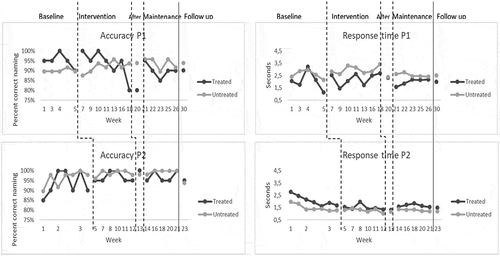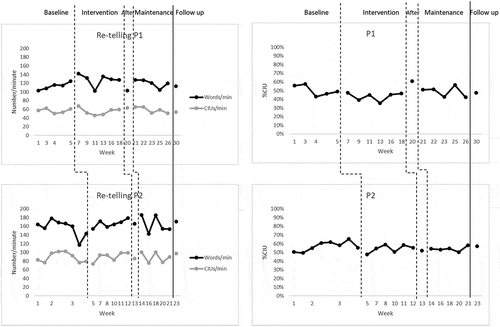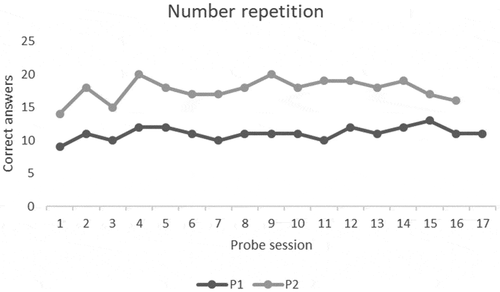Figures & data
Table 1. Participants
Figure 2. Accuracy and speed in repeatedly measured confrontation naming of treated and untreated items.

Table 2. Accuracy and speed in the confrontation-naming tasks
Figure 3. On the left: number of words per minute and number of correct information units (CIUs) per minute in the re-telling task. On the right: percentage of CIUs (%CIU) in the re-telling task.

Figure 4. Self-reports. On top: means and range values per week of the daily ratings of occurrence of anomia and related nuisance (scale: 0 “Not at all” to 4 “On numerous occasions”/“Significantly”). At bottom: weekly self-reported use and usefulness of the SFA strategy (scale: 0 “Not at all” to 4 “On numerous occasions”/“Fairly consistently”), collected in assessment sessions after the baseline (B), i.e., in the intervention phase (I), directly after the intervention (After), in the maintenance phase (M) and at the follow-up session.

Table 3. Self-reported communicative participation



